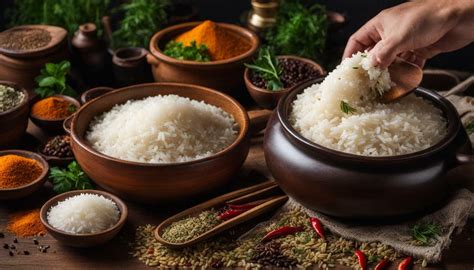As a staple food for billions of people worldwide, rice holds immense cultural significance. Its versatility and nutritional value have made it an indispensable part of various cuisines globally. To fully appreciate the complexities of this ancient grain, it is essential to understand the rich vocabulary associated with rice. This comprehensive guide provides a thorough exploration of rice vocabulary, empowering you to navigate the world of rice terminology with ease.

Anatomy of a Rice Grain
Rice grains are classified into three primary components:
- Hull: The outermost layer, which protects the grain during cultivation
- Bran: The nutrient-rich layer containing fiber, vitamins, and minerals
- Endosperm: The central part, consisting primarily of starch
Types of Rice
The rice world encompasses a vast array of varieties, each with unique characteristics and applications. Some of the most commonly encountered types include:
- Long-grain rice: Elongated grains that remain separate after cooking
- Medium-grain rice: Grains that are shorter and stickier than long-grain varieties
- Short-grain rice: Compact grains that are highly absorbent and suitable for sushi and risotto
- Brown rice: Whole grain rice that retains its bran and germ
- White rice: Milled rice that has been stripped of its bran and germ
- Parboiled rice: Rice that has been soaked, steamed, and dried before milling
Cultivation and Processing
Rice cultivation involves a meticulous process that begins with land preparation and seed selection. The following stages play a vital role in the journey from paddy field to dinner table:
Sowing: Rice seeds are sown in flooded fields known as paddies.
Transplanting: Seedlings are transplanted into individual rows to provide optimal growing conditions.
Fertilization: Fertilizers are applied to boost plant growth and yield.
Harvesting: Mature rice plants are harvested using combines or manual labor.
Threshing: The grain is separated from the straw using mechanical threshers.
Milling: The rice is processed to remove the hull and bran, producing various types of rice.
Nutritional Value
Rice is a powerhouse of nutrients, contributing essential elements to a healthy diet. As per the United States Department of Agriculture (USDA), one cup of cooked white rice provides:
- Calories: 216
- Carbohydrates: 45 grams
- Protein: 5 grams
- Fiber: 0.6 grams
- Iron: 2% of the Daily Value (DV)
- Thiamin (Vitamin B1): 11% of the DV
Health Benefits of Rice
Regular rice consumption offers numerous health benefits:
- Heart health: Brown rice contains fiber, which helps lower cholesterol levels and reduces the risk of heart disease.
- Gastrointestinal health: Rice is easy to digest and can alleviate digestive issues such as diarrhea and constipation.
- Blood sugar regulation: The slow-digesting carbohydrates in rice help maintain stable blood sugar levels, making it a suitable food choice for individuals with Type 2 diabetes.
Cultural Significance
Rice holds profound cultural significance across Asia and many other parts of the world. It is:
- A symbol of fertility, prosperity, and good luck in many cultures
- An integral part of religious ceremonies and festivals
- A medium for expressing artistic creativity in the form of rice sculptures and paintings
Rice in Cuisine
The culinary versatility of rice is unparalleled. It can be cooked in various ways and paired with a wide range of ingredients, making it a staple in cuisines worldwide. Some of the most popular rice dishes include:
- Biryani: A fragrant Indian dish made with rice, meat, and vegetables
- Sushi: Japanese rice balls combined with various fillings and toppings
- Risotto: An Italian dish featuring creamy rice cooked in broth
- Paella: A Spanish rice dish with seafood, vegetables, and meats
- Jollof rice: A flavorful West African rice dish cooked with tomatoes, onions, and spices
Emerging Applications of Rice
Beyond its culinary uses, rice is finding innovative applications in various fields:
- Biofuel: Rice straw can be converted into biofuel, providing a sustainable alternative to fossil fuels.
- Construction materials: Rice husk ash is used in the production of lightweight and durable construction materials.
- Cosmetics: Rice bran oil is a popular ingredient in skincare products due to its antioxidant and moisturizing properties.
Conclusion
The world of rice is vast and multifaceted, offering a rich tapestry of vocabulary, cultivation practices, nutritional benefits, and cultural significance. By embracing this comprehensive guide to rice vocabulary, you can delve into the intricate world of this ancient grain and fully appreciate its versatility and importance. Whether you are a seasoned rice enthusiast or simply curious about this staple food, this guide provides the knowledge and inspiration to unlock the full potential of rice.
